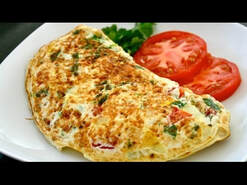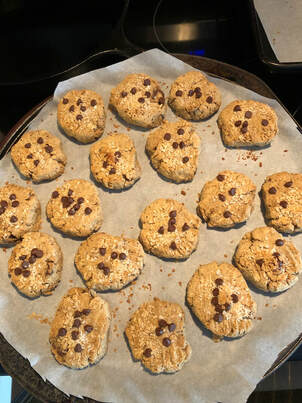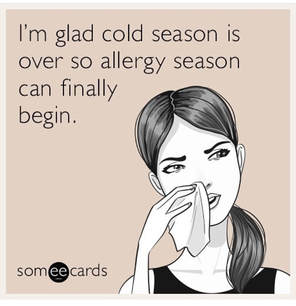Below is the meal plan we came up with to last the two weeks, making enough for the next night's dinner. We also ordered from a local restaurant once a week to help support local businesses.
Hope everyone is staying safe!
Dr Pam xx
|
This has been a very strange time for our global community. So we decided to do our part and shop once to last 10-14 days and created a meal plan to keep us on track. In our house, we are typically at the grocery store almost everyday so this was a big change for us! We are currently on day 13 and just ran out of fresh veggies today, so our plan carried us through and will have kept us out of the public for a two week period.
Below is the meal plan we came up with to last the two weeks, making enough for the next night's dinner. We also ordered from a local restaurant once a week to help support local businesses. Hope everyone is staying safe! Dr Pam xx
0 Comments
Food intolerances or "sensitivities" can affect you in so many ways and can take a few days to show up as a symptom. This is what makes identifying the offending food difficult. Intolerances are also a lot more common than most people think. Sensitivities are different from food allergies or anaphylactic reactions which involve an immediate immune response. Allergies typically present with hives, swelling, and can affect the airway. Allergic reactions can be serious and life-threatening; therefore, require strict avoidance and possibly require the person to carry emergency medicine such as an epi-pen with them. An sensitivity is when you do not tolerate a specific food very well and it causes immediate or chronic symptoms anywhere in the body. Symptoms can take hours or even days to show themselves. And symptoms can be located just about anywhere in the body. This is what makes them so tricky to identify. Symptoms of Food Intolerances There are some common food intolerances that have immediate and terribly painful gastrointestinal symptoms, such as stomach pain, gas, bloating, constipation and/or diarrhea. On the other hand, there are others that cause more insidious symptoms may not be linked to foods in an obvious way. Symptoms such as:
How to Identify these Intolerances It might not be obvious what foods are causing you discomfort. The gold standard for identifying food sensitivities is elimination then challenge. There are foods that are more common so typically we start there. Some people find using blood IgG food panels helpful as a place to start the elimination process. We offer these to patients upon request. Once the foods are identified, stop ingesting them for a period of time; typically three weeks but even up to six months. I can appreciate this isn’t always easy to do! If your symptoms improve within the three week period, we then systematically re-introduce the avoided foods to see which ones were causing which symptoms. It is ideal to work with your naturopathic physician during this process. The good news is, unlike a true allergy, for most people eventually that food maybe consumed periodically without the same degree of distress. This is something we discuss in a visit. Two Common Food Sensitivities Here are two of the most common triggers of food intolerances:
Yes, dairy and grains are a part of many government-recommended food guidelines but you absolutely can get all of the nutrients you need if you focus on replacing them with nutrient-dense foods. Especially for the short duration of the elimination phase. A reliable way to monitor how you feel after eating certain foods is to track it. After every meal or snack, write down the foods you ate and any symptoms so you can more easily spot trends. This is a great tool to bring to your appointment. See the pdf below to download a free copy of my weekly diet diary/food journal to help you track. And, as mentioned earlier, symptoms may not start immediately following a meal. You may find, for example, that you wake up with a headache the morning after eating eggs. You might be surprised what links you can find if you track your food and symptoms well! IMPORTANT NOTE: When you eliminate something, you need to make sure it's not hiding in other foods, or the whole point of eliminating it for a few weeks is lost. Restaurant food, packaged foods, and sauces or dressings are notorious for adding ingredients that you'd never think are there. You know that sugar hides in almost everything, but did you also know that wheat is often added to processed meats and soy sauce, and lactose can even be found in some medications or supplements? When in doubt, ask the server in a restaurant about hidden ingredients, read labels, and consider cooking from scratch. Recipe (dairy-free milk): Homemade Nut/Seed Milk Makes 3 cups
2. Dump soaking water & rinse nuts/seeds. 3. Add soaked nuts/seeds and 2 cups water to a high-speed blender and blend on high for about one minute until very smooth. 4. Strain through a small mesh sieve with 2 layers of cheesecloth. Squeeze if necessary. Serve & enjoy! Tip: You can double the recipe and store the milk in an airtight container in the fridge for up to 7 days.
 Do you love your breakfast? Or are you intermittent fasting but not sure what to break your fast with? I always say, it doesn’t matter what time your first meal of the day is, but it does matter what the first meal of the day is! I encourage my patients to start the day with anywhere from 12-25 grams of protein at their first meal. This might seem like a lot especially if you are used to having a bagel or a bowl of cereal. Having protein at the first meal balances your blood sugar, improves metabolism, and typically leads to an improvement of overall energy for the day. Protein helps you feel fuller longer and uses up calories to absorb and metabolize it. Below are some ideas on how to get the protein, as well as some veggies and healthy fats for your soon-to-be favourite new go-to “breakfasts”. Protein Rich Food #1: Eggs – 2 Eggs = ~ 12g Yes, eggs are the “quintessential” breakfast food. And for good reason! Egg whites are mostly protein while the yolks are the real nutritional powerhouses. Those yolks contain vitamins, minerals, antioxidants, and healthy fats. Eggs have been shown to help you feel full, keep you feeling fuller longer, and help to stabilize blood sugar and insulin. Not to mention how easy it is to boil a bunch of eggs and keep them in the fridge for a “grab and go” breakfast when you're running short on time. And...nope the cholesterol in eggs is not associated with an increased risk of arterial or heart diseases. One thing to consider is to try to prevent cooking the yolks at too high of a temperature because that can cause some of the cholesterol to become oxidized. It's the oxidized cholesterol that's heart unhealthy. Protein Rich Food #2: Nuts and/or Seeds Nuts and seeds contain protein, healthy fats, vitamins, minerals, and fibre. Nuts and/or seeds would make a great contribution to breakfast. Don't be fooled by “candied” nuts, sweetened nut/seed butters, or chia “cereals” with added sugars – you know I'm talking about the real, whole, unsweetened food. Hempseed's are a great option as they contain approximately 11g in just three tablespoons so are easily added to a smoothie, cereal, salads, or to top nut-butter toast. Protein Rich Foods #3: Greek Yogurt (plain), Cottage Cheese, or Tofu While dairy and soy are not always tolerated by everyone, per serving they contain very high amounts of protein and can be a great choice for those that can safely digest them. It is easy to add fruit, nuts/seeds, or even vegetables to make a balanced meal while on the go. On top of the protein content, you will also get a great amount of calcium and other important minerals. Recipe: Veggie Omelet Serves 1 Protein 12-18g (depending on veggies)
In the meantime grab a bowl and beat the egg (or tofu) with your vegetables of choice and the spices. Tilt pan to ensure the bottom is covered with the melted oil. Pour egg mixture into pan and lightly fry the eggs without stirring. When the bottom is lightly done flip over in one side and cook until white is no longer runny. Serve & Enjoy! Over Night Oats Serves: 1-3 Protein: 12-30g (if add whey protein powder) Download the recipe here:
The first few days postpartum can be pretty vulnerable for the new parents. This little human is now reliant on them to figure out their needs, add to this sleep deprivation and the healing time that is needed and it can be a bit overwhelming to say the least. It is also wonderful to be in, what I like to call, the “Newborn Bubble” where time doesn’t exist and you just stare at your newborn in wonderment!
We had a lot of people asking us what we needed so I thought it would be helpful to write out a few items we personally found to be really convenient during this time. This list is far from perfect and I am sure will grow with time :)
As we "patiently" wait for the arrival of our first baby, I have been preparing for life after baby to make things easier such as different freezer meals and snacks. These lactation cookies are actually quite tasty and nutritious, I've already made them twice as the first batch didn't actually last the week! I am terrible at following recipes, so here is a rough guide of what I put in the latest batch.  Lactation Cookie Recipe
Pre-heat oven to 350F. Combine ingredients, roll into balls then flatten into discs, and bake for 15 mins. I always double the recipe and keep some in the freezer for later – although they don’t usually last long!  Spring is such a beautiful time of year. The cherry blossoms and warmer weather means more time outdoors. This is all very exciting for most of us but can be dreaded by those who experience seasonal allergies or hay fever. There are many ways to naturally improve your immune system to help alleviate the symptoms experienced. It is ideal to start earlier in the spring; do not wait until you are experiencing symptom’s to start controlling them. Here are five strategies to minimize impact of your seasonal allergies this year:
|
Dr. PamHas a special interest in assisting families, moms, and moms-to-be with everyday health concerns. Archives
March 2020
Categories
All
|
||||||||||||||